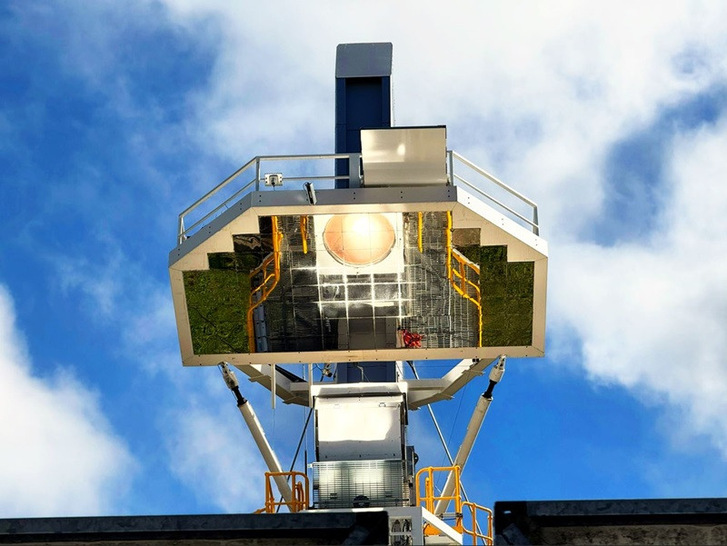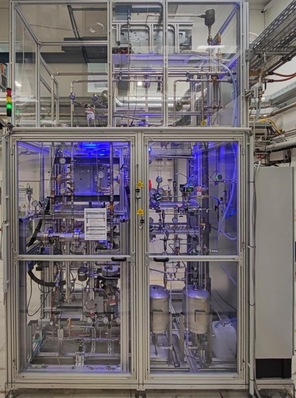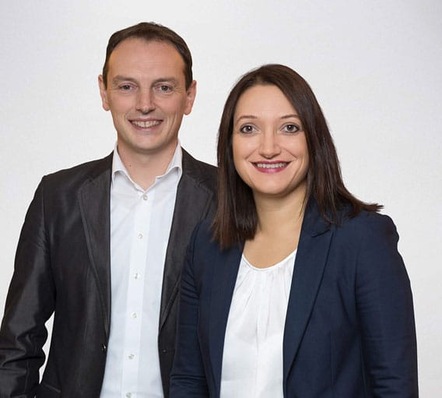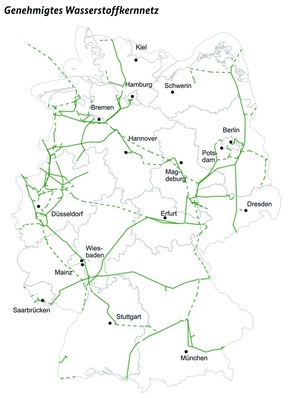At its Newcastle site, the Australian research organization CSIRO has presented a new process for solar hydrogen production. At the center is a so-called beam-down solar reactor, which uses concentrated solar energy to thermochemically split water into hydrogen and oxygen. The demonstration was carried out with support from the Australian Renewable Energy Agency (ARENA).
Unlike conventional solar thermal systems, in which sunlight is concentrated at the top of a tower, the beam-down system directs the light from top to bottom onto a reactor platform. A field of heliostats – movable mirrors – tracks the position of the sun and reflects the light onto a central tower, which channels it into the reactor.
The core of the reactor is a metallic oxide called doped ceria, which was developed by Niigata University in Japan. This material can release and absorb oxygen at comparatively low temperatures. When heated by solar energy, it releases oxygen. Upon contact with steam, it absorbs oxygen from the water – producing hydrogen gas, which can be separated and stored. The process is cyclical, and the material can be reused multiple times.
According to Professor Tatsuya Kodama of Niigata University, the doped ceria produces more than three times the amount of hydrogen compared to conventional materials in similar reactions. “This shows real potential for improving the efficiency of future designs,” said Kodama. The demonstration marked the first use of the material in a test at demonstration scale.
According to CSIRO researcher Jin-Soo Kim, who led the project, the process achieves a potential solar-to-hydrogen efficiency of over 20 percent. This is above the level of many existing systems, which typically reach around 15 percent. “We have demonstrated a two-step water splitting process using a new material that operates at relatively moderate temperatures,” said Kim. While the process is not yet at industrial scale, the reactivity under the given conditions is promising.
According to CSIRO, the beam-down technology also offers new opportunities for research into high-temperature processes, such as in metal processing. “This is a significant step forward for solar thermal research in Australia,” said Noel Duffy, head of CSIRO’s solar technologies. The setup enables more flexible testing for chemical and solid-state reactions.
In the long term, the technology could contribute to the decarbonization of industries that are difficult to electrify, such as steel, iron or aluminum production. CSIRO sees this as a potential contribution by Australia to the global supply of low-emission hydrogen.









